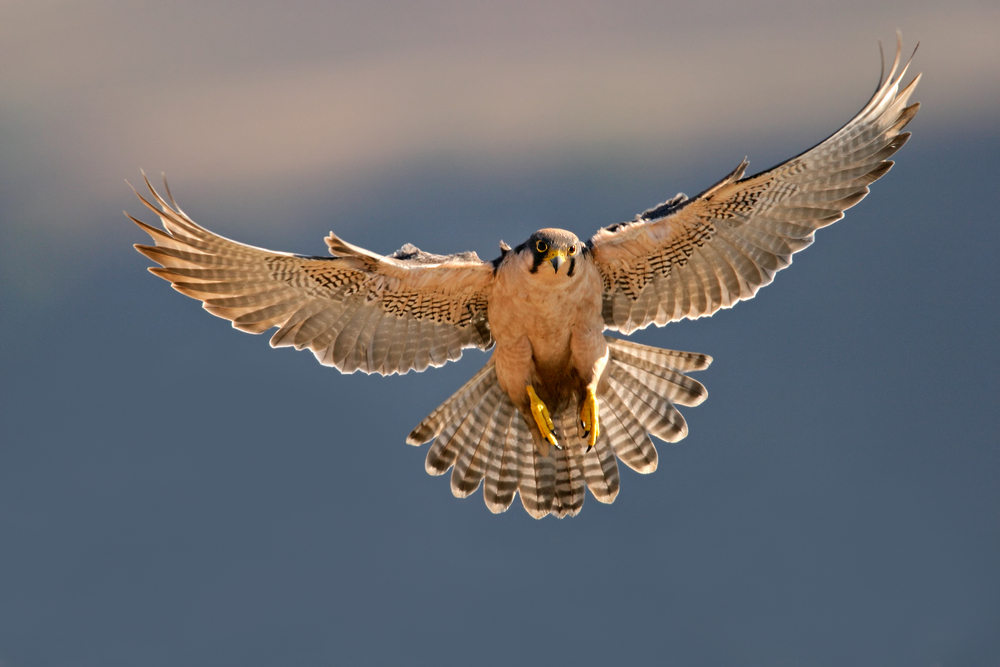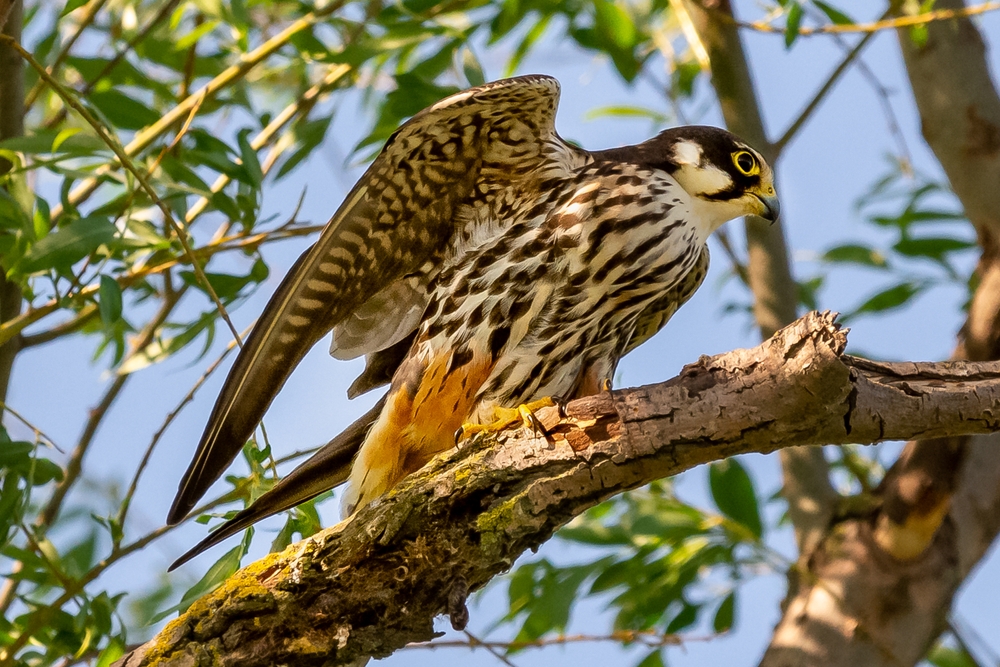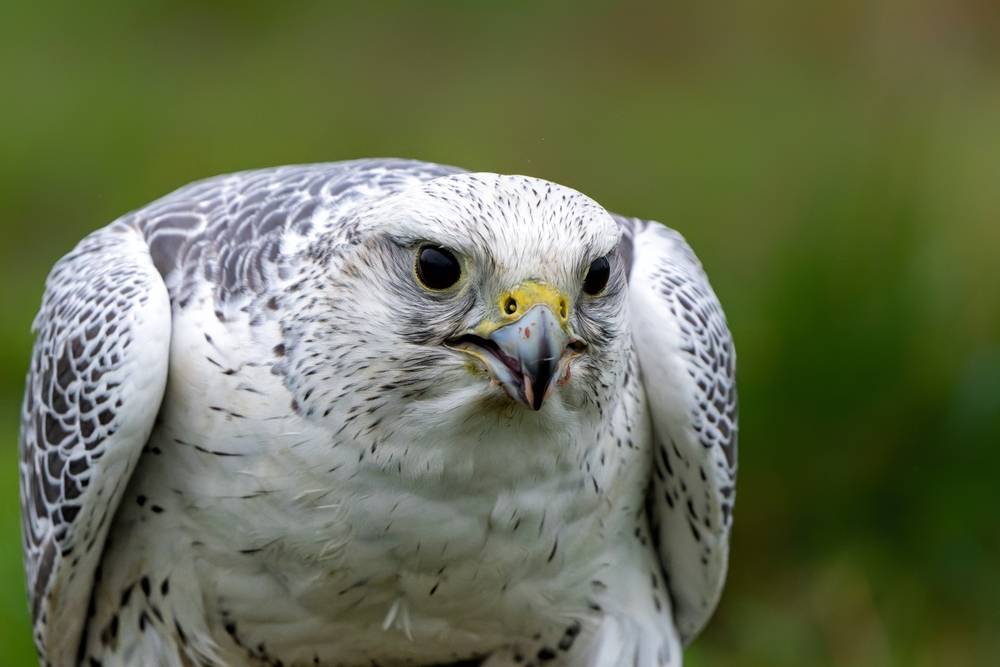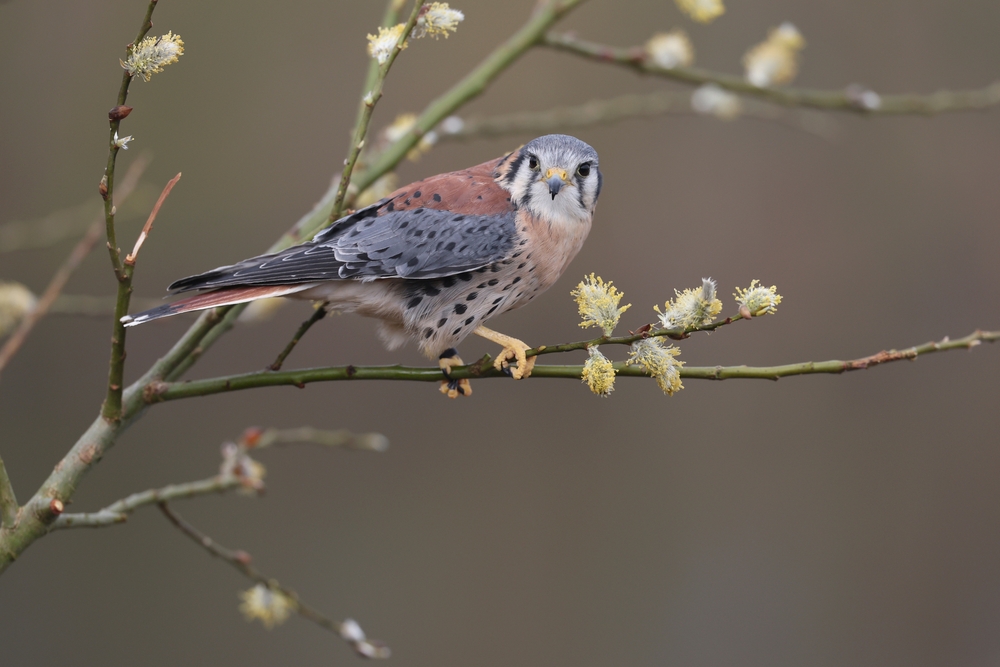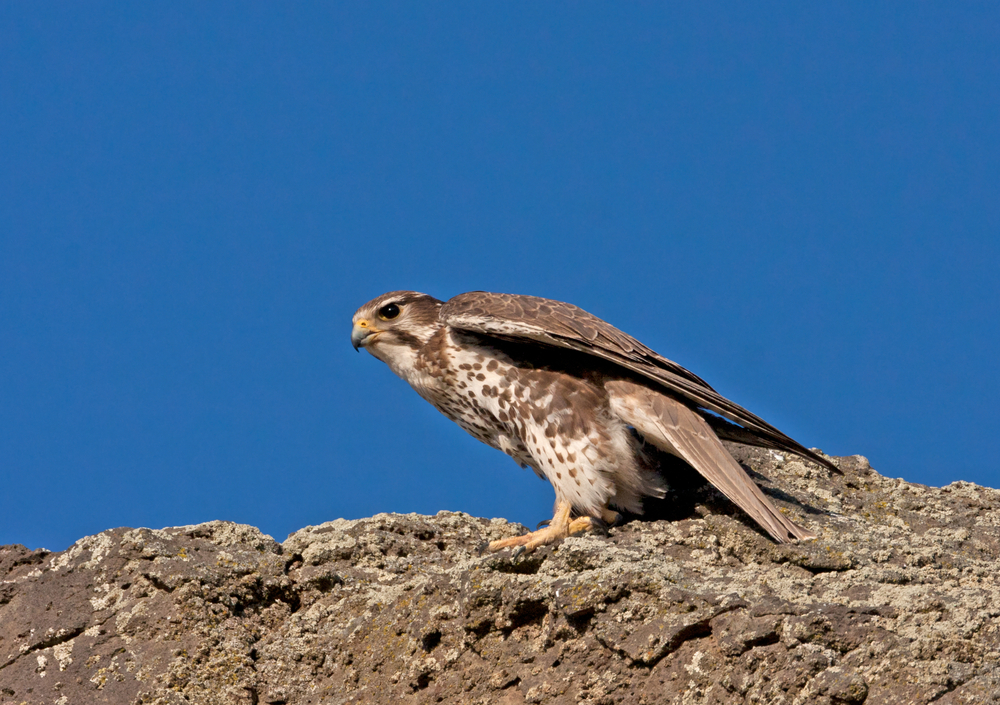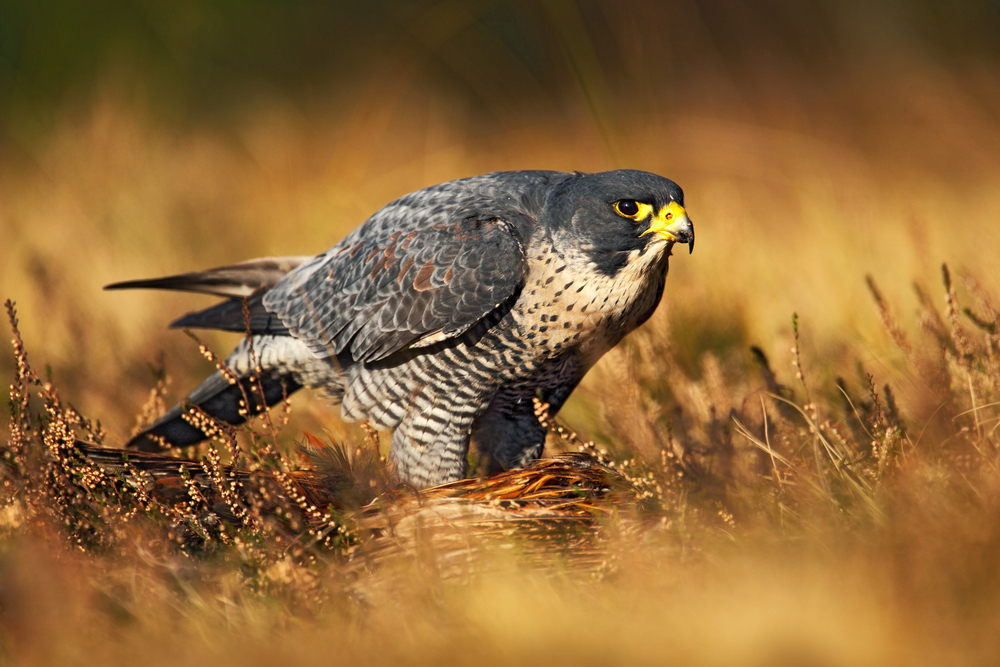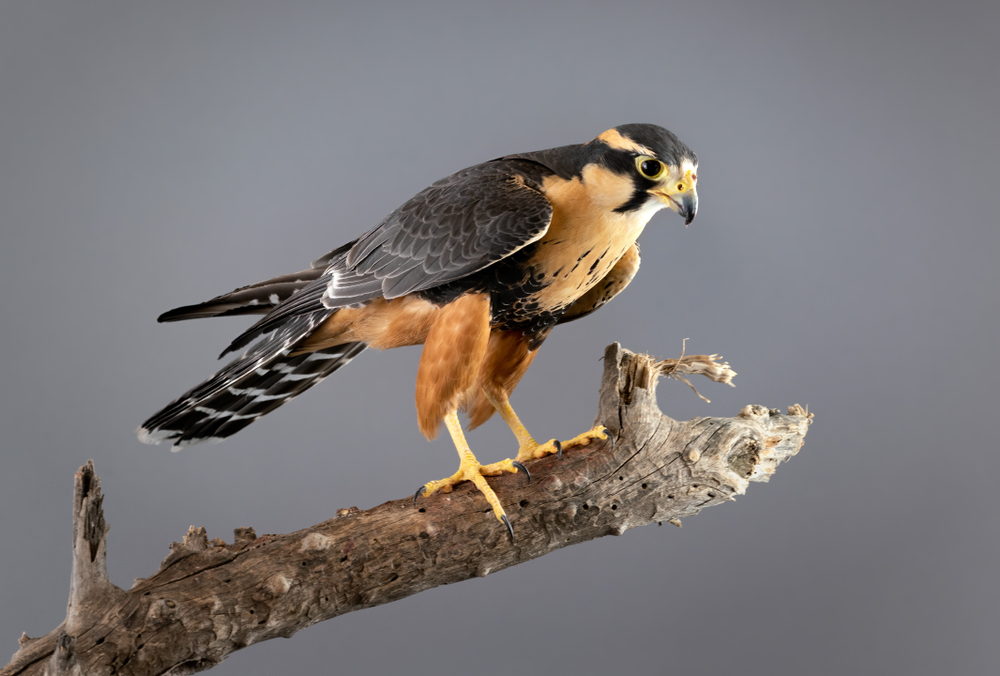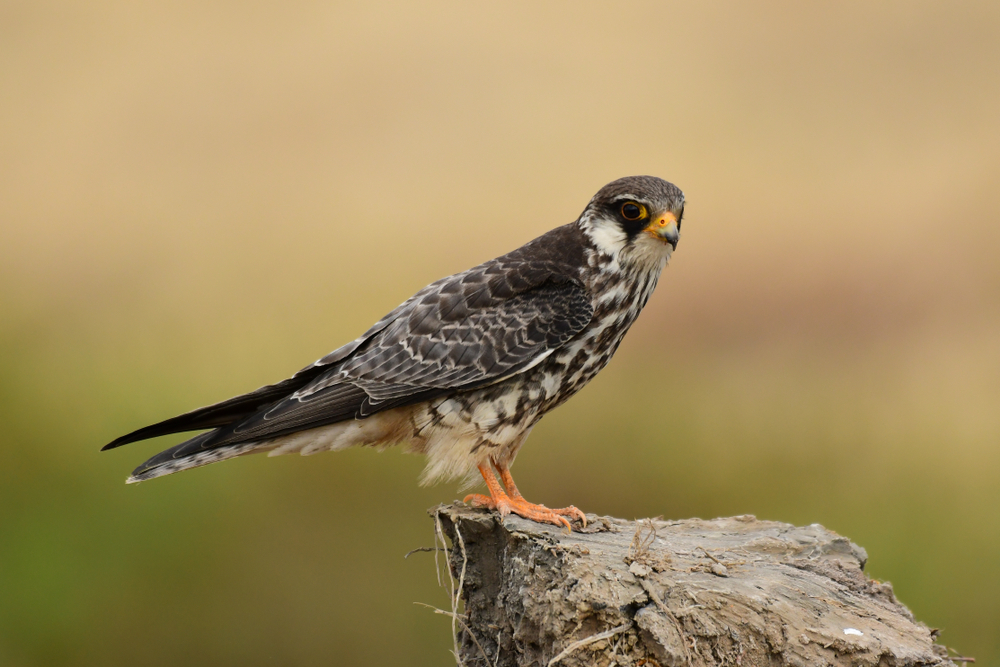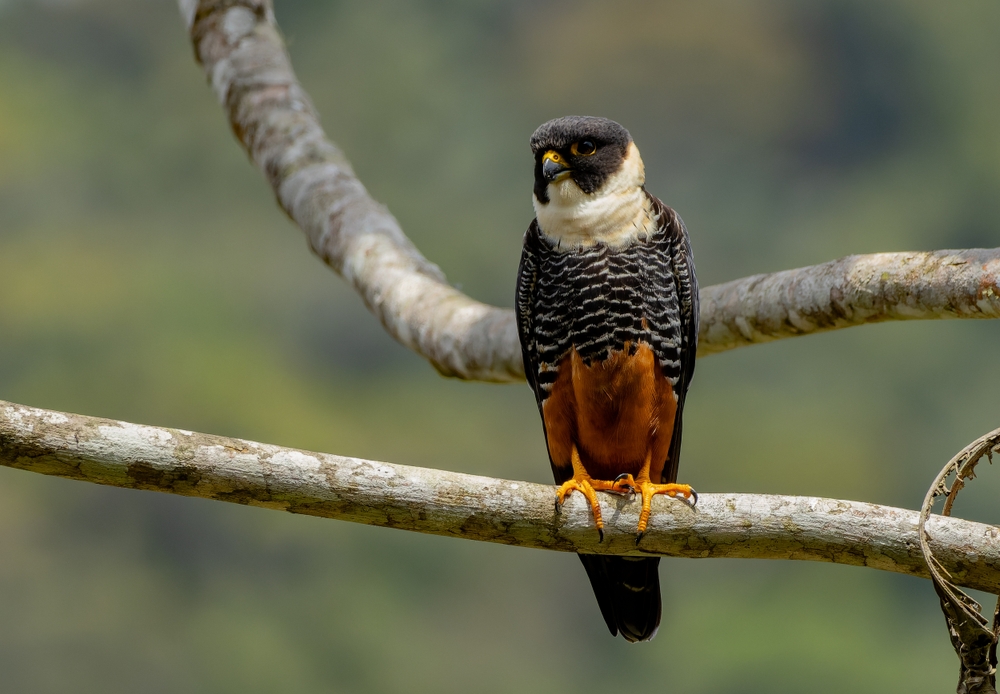The Lanner Falcon (Falco biarmicus) is most closely related to the Saker Falcon (Falco cherrug), both being large, open-country falcons with similar hunting styles and overlapping ranges in parts of Eurasia.
About
The Lanner Falcon (Falco biarmicus), a member of the Falconidae family, is a medium-to-large falcon widely distributed across Africa, parts of the Middle East, and southern Europe. Known for its speed, agility, and cooperative hunting strategies, the Lanner Falcon is one of the most skillful avian predators in open landscapes such as savannas, deserts, and grasslands.
This falcon has a long, slim body with pointed wings and a relatively long tail that aids in maneuverability. Adults typically display a pale underside streaked with dark markings, a grayish back, and a distinctive black “moustache” mark on the face, giving it a striking appearance. Females are larger than males, with wingspans ranging from 95–115 cm (37–45 in).
Lanner Falcons are versatile hunters, often pursuing birds in midair or diving swiftly onto prey from above. Unlike the Peregrine Falcon, which relies heavily on high-speed stoops, the Lanner excels in sustained, acrobatic chases, sometimes hunting cooperatively in pairs to flush and capture prey. Their diet includes pigeons, doves, sandgrouse, starlings, and occasionally small mammals, reptiles, and insects.
Breeding usually takes place on cliffs, rocky ledges, or in abandoned nests of crows and other large birds. A typical clutch contains 2–4 eggs, with both parents sharing incubation and feeding duties. Chicks fledge after about 40 days, but parental care continues until they master hunting.
Throughout history, the Lanner Falcon has been highly esteemed in falconry, particularly in North Africa and the Middle East, where its trainability and cooperative hunting style were admired. Although generally widespread, localized declines have occurred due to habitat loss, human disturbance, and depletion of prey species. Conservation efforts emphasize habitat protection and monitoring of regional populations.
Physical Characteristics
The Lanner Falcon (Falco biarmicus) is a medium-to-large falcon of Africa, southern Europe, and parts of Asia, known for its powerful build and variable plumage.
Plumage:
-
Adults: Generally grayish-brown to slate above, with pale underparts heavily streaked or spotted with dark markings. The crown and nape are pale, often buff or whitish, contrasting with a darker “moustache” stripe on the face.
-
Juveniles: Darker and browner overall, with heavier streaking on the chest and belly, giving a more mottled appearance.
Head and Face:
The head is proportionately large with a pale crown and nape. A dark stripe runs down from the eye (“moustache”), though it is less bold than that of the Peregrine Falcon. The eyes are large and dark, set against a yellow cere and orbital ring.
Body and Wings:
Lanner Falcons have a strong, robust body with long, pointed wings adapted for speed and maneuverability. While less compact than Peregrines, they are powerful flyers capable of sustained, fast chases.
Tail:
The tail is long and rounded at the tip, grayish with darker barring, and used for precise control in aerial pursuits.
Size:
-
Length: 16–20 in (40–50 cm)
-
Wingspan: 34–41 in (87–105 cm)
-
Height at Rest: About 17 in (43 cm) when perched
Weight:
-
Adult Male: 1.3–1.8 lbs (600–800 g)
-
Adult Female: 1.8–2.2 lbs (800–1,000 g)
The Lanner Falcon’s pale crown, streaked underparts, and long tail help distinguish it from Peregrines. Its powerful body and broad hunting range make it one of the most versatile and respected falcons of the Old World.
Reproduction
The Lanner Falcon (Falco biarmicus) breeds across Africa, the Middle East, and parts of southern Europe, with a reproductive cycle adapted to open-country and cliff-rich habitats.
1. Mating and Courtship:
Lanner Falcons are monogamous and often form long-term pair bonds. Courtship includes aerial displays, fast chases, and food offerings from the male to the female. Pairs frequently return to the same nesting site year after year.
2. Nesting Sites:
They do not build their own nests. Instead, they use cliff ledges, rocky outcrops, or abandoned nests of other large birds, such as ravens or storks. In some regions, they also nest on tall trees or occasionally man-made structures.
3. Egg Laying:
The female lays 2–5 eggs per clutch, typically from February to April in the northern range, and during the dry season in sub-Saharan Africa. Eggs are cream-colored with reddish-brown speckling.
4. Incubation:
Incubation lasts about 32–34 days. The female performs most of the incubating, while the male supplies food and occasionally helps with incubation.
5. Hatching and Care of Chicks:
Chicks hatch covered in white down and are helpless at birth. The female broods them closely during the first two weeks, while the male delivers food. As chicks grow, both parents contribute to feeding.
6. Fledging and Independence:
Young falcons fledge at about 40–45 days of age. After leaving the nest, they remain dependent on their parents for several additional weeks while learning hunting skills.
7. Breeding Frequency:
Most pairs raise one brood per year, though pairs may re-nest if a clutch fails early.
The Lanner Falcon’s reliance on open cliffs and abandoned nests, along with its strong pair bonds and attentive parental care, contribute to its reproductive success across a broad range.
Lifespan
The Lanner Falcon (Falco biarmicus) has a moderate to long lifespan for a medium-sized falcon, with survival influenced by predation, habitat conditions, and human impact.
Lifespan in the Wild:
In the wild, Lanner Falcons typically live 12–16 years. Many juveniles, however, do not survive their first year due to predation, starvation, or inexperience in hunting. The oldest recorded wild individuals have lived up to 18 years.
Lifespan in Captivity:
With reliable food, veterinary care, and protection from natural threats, Lanner Falcons may live up to 20–25 years in captivity.
Threats to the Lanner Falcon:
-
Predation: Eggs and chicks are vulnerable to crows, ravens, snakes, and larger raptors. Adults have few natural enemies.
-
Habitat Loss: Agricultural expansion, urbanization, and disturbance to cliff habitats reduce nesting and hunting grounds.
-
Pesticides & Chemicals: Poisoning and reduction of prey species due to chemical use negatively impact populations.
-
Human Activity: Persecution, egg collection, and illegal trapping for falconry can affect local populations.
-
Climate Change: Shifts in prey availability and habitat conditions may affect breeding and survival in some regions.
The Lanner Falcon’s relatively long lifespan, combined with its strong fidelity to nesting sites and adaptability to different habitats, supports its survival across a wide range, though local populations may face serious pressures.
Eating Habits
The Lanner Falcon (Falco biarmicus) is a powerful and versatile hunter, favoring open-country pursuits where its speed and stamina can be used to full advantage.
Diet:
-
Birds: The primary prey includes pigeons, doves, sandgrouse, partridges, larks, and other small to medium-sized birds.
-
Mammals: Occasionally hunt rodents, hares, and bats.
-
Insects & Reptiles: Will take large insects and small reptiles when birds are less abundant.
Hunting Strategy:
-
Cooperative Hunting: Pairs often hunt together, with one flushing prey and the other intercepting it—a behavior rare among falcons.
-
Aerial Pursuit: They rely on fast, sustained chases at low to medium altitudes, using their long wings and powerful flight.
-
Ambush Tactics: From perches on cliffs or trees, they launch surprise attacks on unsuspecting flocks.
Feeding Behavior:
-
Prey is killed swiftly with a powerful bite to the head or neck.
-
Small prey may be eaten in flight, while larger birds are carried to a perch for plucking and consumption.
-
During breeding, males provide most of the food for females and chicks, sometimes making mid-air prey transfers.
Success and Adaptability:
The Lanner Falcon’s ability to work in pairs, target a wide range of prey, and use both speed and strategy makes it one of the most adaptable falcons of Africa and Eurasia. Its reliance on open landscapes and cliff perches, however, means habitat degradation can strongly affect local populations.
Uniqueness
The Lanner Falcon (Falco biarmicus) is a striking and versatile bird of prey, with several features that make it stand out among falcons.
Cooperative Hunting:
Unlike most falcons, Lanner Falcons frequently hunt in pairs. One bird may flush flocks of prey while the other intercepts them mid-air, a rare teamwork strategy in raptors.
Adapted for Open Country:
Specialized for hunting in grasslands, savannas, and semi-desert regions, the Lanner favors sustained, low-level chases rather than high stoops, showcasing endurance over sheer speed.
Variable Plumage:
The species exhibits considerable variation in coloration across its range, from pale, sandy individuals in North Africa to darker forms in southern Africa, making it one of the more diverse falcons in appearance.
Historic Importance in Falconry:
The Lanner Falcon has been prized in falconry for centuries, particularly in the Middle East and North Africa, where its power, stamina, and trainability made it a valued hunting partner.
Wide Range and Adaptability:
It inhabits a broad distribution across Africa, southern Europe, and parts of Asia, thriving in open terrain and even adapting to agricultural landscapes.
The Lanner Falcon’s pair-hunting behavior, open-country specialization, and long cultural history distinguish it as one of the most unique and respected falcons in the Old World.
Be the First to Share Photos of This Species.
FAQ’s
1. What is the species closest to the Lanner Falcon?
2. How does the Lanner Falcon compare to other falcons?
The Lanner is slimmer and less compact than the Peregrine Falcon, relying on endurance chases rather than steep stoops. It also differs from the Saker Falcon by being slightly smaller and lighter, with more varied plumage. Its tendency to hunt cooperatively in pairs is rare among falcons.
3. Which national parks provide the best opportunities to see a Lanner Falcon?
Which national parks provide the best opportunities to see a Lanner Falcon?
-
Kruger National Park (South Africa): A reliable stronghold where Lanners hunt pigeons and doves.
-
Serengeti National Park (Tanzania): Frequently seen pursuing prey over open savannas.
-
Etosha National Park (Namibia): A prime viewing site in semi-arid habitats.
-
Sahara Desert Reserves (Morocco & Algeria): Northern populations thrive in open desert landscapes.



































































